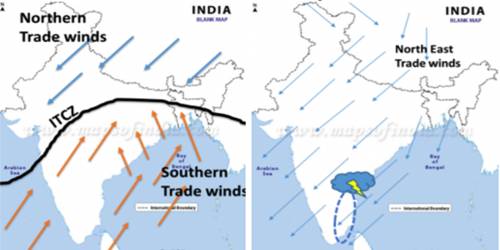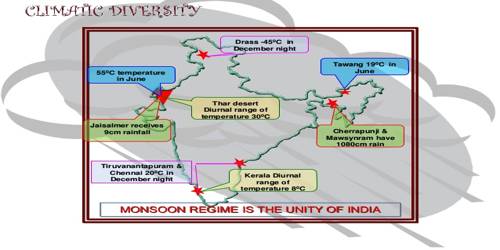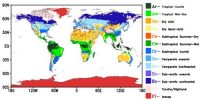Pressure and Winds of Cold Weather Season in Indian Subcontinent
By the end of December (22nd December), the sun shines vertically over the Tropic of Capricorn in the southern hemisphere. The weather in this season is characterized by feeble high-pressure conditions over the northern plain. In south India, the air pressure is slightly lower. The isobars of 1019 mb and 1013 mb pass through northwest India and far south, respectively.
- Pressure is comparatively lower in south India.
- The winds start blowing from high-pressure area of the north-west to low-pressure area of the south-east. The wind velocity is low due to a low-pressure gradient.
- The path of the winds depends on pressure gradient and physiography.
As a result, winds start blowing from northwestern high-pressure zone to the low air pressure zone over the Indian Ocean in the south.

Due to a low-pressure gradient, the light winds with a low velocity of about 3-5 km per hour begin to blow outwards. By and large, the topography of the region influences the wind direction. They are westerly or northwesterly down the Ganga Valley. They become northerly in the Ganga-Brahmaputra delta. Free from the influence of topography, they are clearly northeasterly over the Bay of Bengal.
During the winters, the weather in India is pleasant. The pleasant weather conditions, however, at intervals, get disturbed by shallow cyclonic depressions originating over the cast Mediterranean Sea and traveling eastwards across West Asia, Iran, Afghanistan, and Pakistan before they reach the northwestern parts of India. On their way, the moisture content gets augmented from the Caspian Sea in the north and the Persian Gulf in the south.















